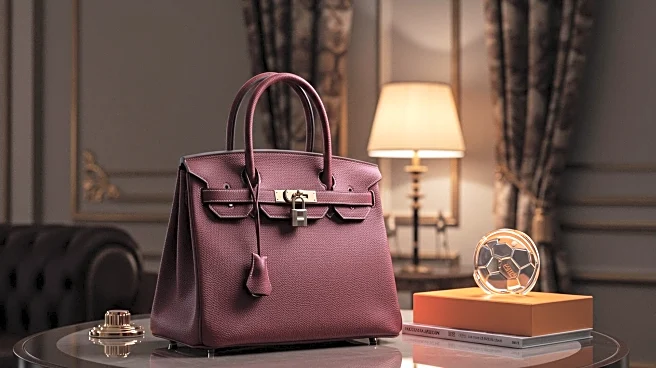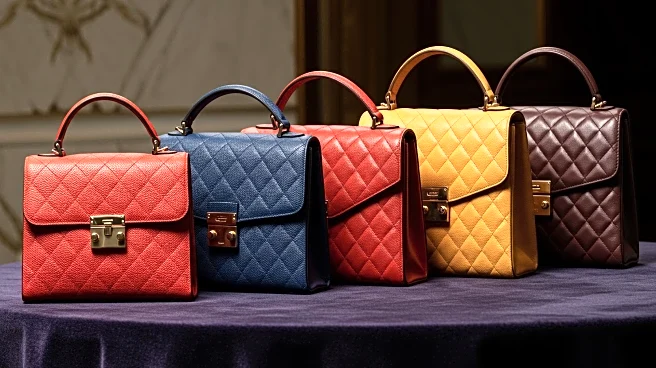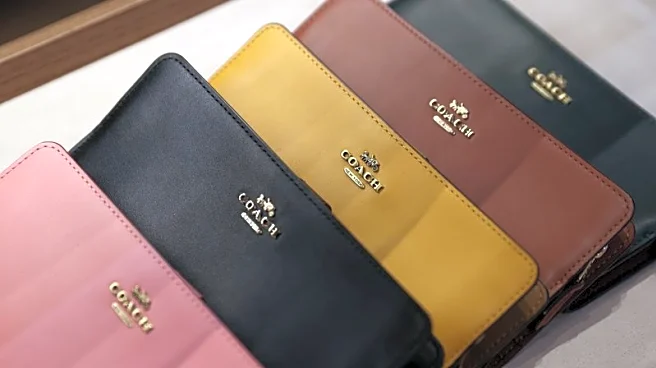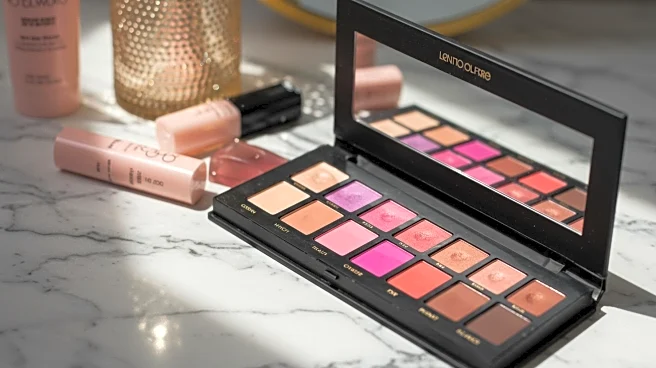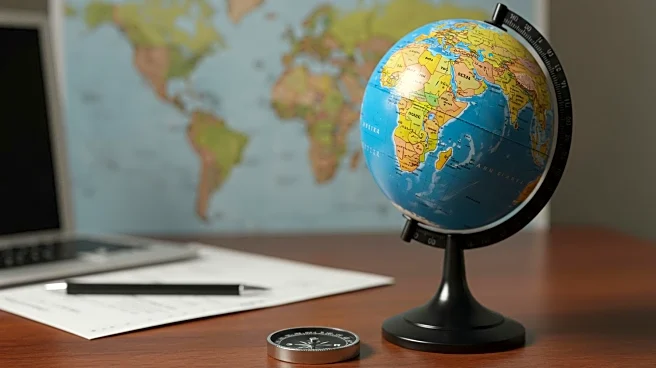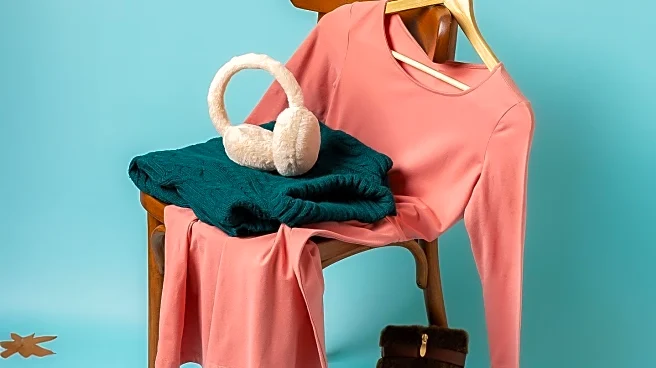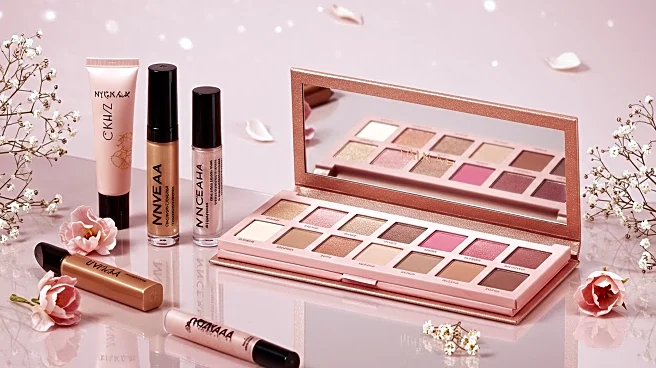What's Happening?
Luxury consumers are increasingly purchasing secondhand Hermès Birkins and Kellys as a means to diversify their assets, according to a report by WWD. The secondhand market for luxury goods, particularly Hermès bags, is thriving due to their reputation for retaining or increasing in value over time. Reklaim, an e-commerce platform, reports that Hermès, Chanel, and Goyard are among the top-selling brands, with a notable increase in sales over the past year. This trend is driven by consumers seeking timeless items that offer strong returns on investment. The secondhand luxury market has grown significantly, reaching an estimated 48 billion euros in 2024, as per the Bain-Altagamma Luxury Goods Worldwide Market Study. This growth is attributed to aspirational customers who prefer pre-owned luxury items due to their affordability compared to new products.
Why It's Important?
The shift towards secondhand luxury goods highlights a significant change in consumer behavior, influenced by economic uncertainty and the desire for value retention. This trend benefits consumers by providing access to high-end products at more affordable prices, while also offering a sustainable shopping option. The growth of the secondhand market poses challenges to traditional luxury retailers, who may face decreased demand for new items. Additionally, it reflects broader economic conditions, where consumers are more cautious with their spending and seek investments that offer financial security. This development could lead to increased competition among e-commerce platforms specializing in pre-owned luxury goods, potentially reshaping the luxury retail landscape.
What's Next?
As the holiday shopping season approaches, Reklaim anticipates a shift in consumer preferences towards brands like Louis Vuitton, Gucci, Prada, and Saint Laurent. This change is expected as budget-conscious consumers seek recognizable and timeless styles at discounted prices. The potential impact of tariffs and price increases by designers may further drive consumers towards the secondhand market, empowering them to find products within their budget without compromising on style or quality. The ongoing economic conditions and consumer behavior trends will likely continue to influence the dynamics of the luxury goods market, with secondhand platforms playing a crucial role in meeting consumer demands.
Beyond the Headlines
The rise of the secondhand luxury market also raises questions about the sustainability and ethical implications of luxury consumption. As consumers become more environmentally conscious, the appeal of pre-owned items aligns with the growing demand for sustainable fashion. This shift could encourage luxury brands to adopt more sustainable practices and explore new business models, such as offering their own certified pre-owned collections. Additionally, the increased focus on asset diversification through luxury goods may influence financial planning strategies, as consumers seek alternative investment opportunities in uncertain economic times.
